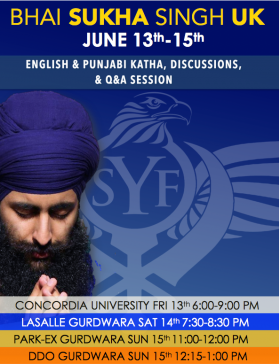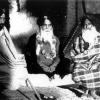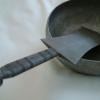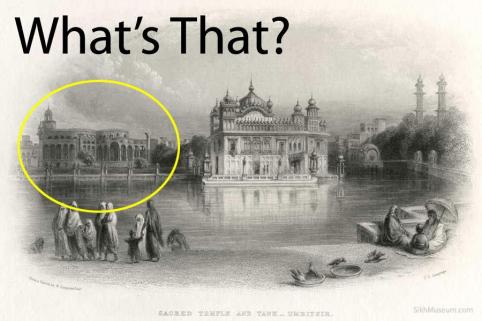Search the Community
Showing results for tags 'History'.
-
With the grace of Sri Guru Granth Sahib Ji, Bhai Sukha Singh will be beginning his USA and Canada tour of 2014 in Montreal Bhai Sukha Singh's schedule in Montreal is as follows below... 13th June Concordia University 6pm till 9pm 14th June Lasalle Gurdwara Sahib 7.30pm-8.30pm 15th June Park-ex Gurdwara Sahib 11am-12pm Location TBA 2pm-4pm Guru Ang Sang Gurshabad Veechar Team
-
- bhai sukha singh
- katha
-
(and 6 more)
Tagged with:
-
Wahegurujikakhalsa, Wahegurujikifateh! Sangat Ji, as you know www.gurshabadveechar.com was launched on 1st November 2013 on the Prakash Purab of Mata Sahib Kaur Ji. We are hoping to collect together as many audio and video recordings of katha, kirtan and vichar by Bhai Sukha Singh as possible. If anyone in the sangat has audio/video recordings or photographs of Bhai Sukha Singh doing katha, Kirtan or vichar. We humbly request you contact us ASAP so that we can add these to the website. Also please contact us if you have any suggestions for the website. Either comment on this post or email us at gurshabadveechar@gmail.com Wahegurujikakhalsa, Wahegurujikifateh!
- 1 reply
-
4
-
- www.gurshabadveechar.com
- bhaisukhasingh
- (and 8 more)
-
Dubious game by Zail, Buta, alleges former cop New Delhi : Retired Punjab Police chief Kirpal Dhillon has blamed late President Zail Singh and former Home Minister Buta Singh for dubious attempts to sabotage the Rajiv-Longowal accord signed in 1985 to put behind the Sikh terrorism that had then engulfed the state. He has also blamed KPS Gill, the then IG of Punjab, in his book published early this week for lapses in security that led to the killing of Akali Dal chief Harchand Singh Longowal in August 1985 and blames then Governor late Arjun Singh for giving rise to militancy in the post-Bluestar days. Longowal had credibility among Hindus and Sikhs. This did not suit Zail Singh and Buta Singh and their supporters in the Punjab Congress, who had been playing a dubious game to negate whatever Longowal and Rajiv Gandhi (then PM) were trying to achieve. Dhillon, a 1953 batch IPS officer of Madhya Pradesh cadre, has penned his memoirs: Time present and time past memories of top cop. Handpicked by then PM Indira Gandhi, Dhillon was posted as the DGP of Punjab on July 3, 1984, a month after Operation Bluestar at the Golden Temple in Amritsar. He accuses Zail-Buta duo of promoting the family of Sant Jarnail Singh Bhindranwale in the post-Bluestar days like in 1978 when Bhindranwale was projected as counterfoil the Akalis. They, after the death of Bhindranwale, zeroed in on his father Joginder Singh. Dhillon writes that Joginder Singh nd his outfit, the United Akali Dal, was used to derail the April 30, 1985 meeting of Akalis at Anandpur Sahib which (Parkash Singh) Badal described as the past, present and future of Punjab. Dhillon narrates another incident of October 1, 1984 when 200 extremists gathered in the Golden Temple and made seditious speeches.we later found out that this was the work of the Akali faction close to Zail Singh. He is equally harsh on Arjun Singh who was the Governor of Punjab during the Presidents rule. Before Arjun Singh arrived in March 1985, we were doing fairly well with militant violence amrkedly under control. The former DGP then goes on to elaborate the hand of the Centre in managing Punjab through Arjun Singh who got installed S S Barnala as the chief minister in September 1985. As it happened, Arjun Singh had a hand in selecting candidates for the legislative elections, both for Congress and the Akali parties..It had to be ensured that the selection of Akali candidates was made in such a way that Barnala, and not Badal, would emerge as the leader of Akalis since Arjun Singh found the former easier to manage. Source - http://freepressjournal.in/dubious-game-by-zail-buta-alleges-former-cop/
-
Waheguru History of the Sikh Misals Book Ramgarhia Misal Faizullapuria Misal Kanaihya Misal Sukarchakia Misal Dallewalia Misal Shahid or Nihang Misal Nakkai Misal Nishanwalia Misal Karorsinghia Misal Phulkian Misal Ahluwalia Misal Bhangi Misal Waheguru
-
How many of you have watched this documentary? 1984, a Sikh story (BBC documentary) Today we were watching this documentary in the class and I really liked it..so I thought I should share.. It is well-made and it features a Sikh girl from England going to India to research about 1984 incidents and how it changes her life and her view of her religion. Do watch. I'm not sure if this is the right thread to post..but whatever.. ===================== On a side note : Who do you vote in Punjab? What is the popularity of current ruling party of Punjab? I know its some Sikh party called something akal etc. What is your opinion of their performance in Punjab?
-
There is so much to learn in Sikhi, such as Gurus history, gatka, kirtan, santhiya, recent history, rehat etc etc etc!! I have some basic knowledge on most of the above but I am really confused on where to start! I’m studyingtoo. . I want to do it for my own personal knowledge, to teach others! So where did you start from?
-
DHAN DHAN GURU GOBIND SINGH SAHIB JEE. DHAN DHAN GURU GRANTH SAHIB JEE. DHAN DHAN DASAM GRANTH SAHIB JEE. DHAN DHAN SARBLOH GRANTH SAHIB JEE. DHAN DHAN BHAI MANI SINGH JEE. DHAN DHAN BHAI SUKHA SINGH JEE. DHAN DHAN BHAI MEHTAB SINGH JEE. DHAN DHAN PUNJAB DIGITAL LIBRARY JEE. Further proof that Dasam Granth Sahib (as a large Granth) was in existance during Guru Gobind Singh Jee's life (or right after) and that Dasam Granth Sahib was around way before Bhai Sukha Singh Jee and Bhai Mehtab Singh Jee took care of Massa Rangarh. Also this is further proof that Dasam Granth is not created by British or RSS or Nirmalas or Mahants or whatever conspiracy theory people try and make up. There are MANY proofs of Dasam Granth before 1800 and even before 1750, so all of those conspiracy theories go out of the window. I find it very interesting that these saroops are found in Maharastar and Aandhra Pradesh......the same areas where the missionaries are going out of their way to do katha and seminars and speak against Hemkunt Sahib and Dasam Granth Sahib, etc. These historical granths were found in Pinds (villages). I have always been very against the missionaries' "Pind Sambhaalo (take care of your village)" initiative, (where they go into your village and do 'parchaar' for a certain period of time in order to 'save' Sikhi). These findings makes things look even more suspicious. Hmmm.... Let us support organizations like Punjab Digital Library, who are trying to preserve our history and traditions...rather than destroy it like the missionaries are attempting to do. This is also further proof that we need to respect and embrace other religions and communities, as these people have a lot of hidden treasures of the Sikhs. Not just in India, but in Pakistan, Middle East, possibly china, possibly russia, possibly eurpoean countries, etc as well. I urge anyone who has a piece of Sikh history (or anything related to it), to contact Punjab Digital Library so that it can be digitalized and shared with everyone. Let's stop keeping these types of treasures to ourselves, and let everyone enjoy the Amrit Ras and Darshan. One fine example is of this is a family in the UK: http://www.sikhsangat.com/index.php?/topic/69908-bhai-mani-singh-wrote-arth-pothis-16vol-uk/?hl=%2Bbhai+%2Bmani+%2Bsingh It is a historical FACT that Bhai Mani Singh Jee did Katha of Gurbani to Sangat and taught them correct meanings. So it is very exciting to hear that there is written copies of the katha/explanations as well. It is very sad however that they are not being revealed for digitalization. However, in the meantime, let us enjoy and celebrate these new discoveries! I know I went off on a tangent and only talked about Dasam Granth Sahib Jee. These findings are great for research on Guru Granth Sahib Jee as well. As many manuscripts and Granths were destroyed in the Sikh Reference Library fire, these are crucial findings for Sikh history. These findings will further give scholars resources to examine and compare to other historical Granths. Sikhi is not old, let's stop pretending like it is. 250, 300 and 350 year old Granths go back to Guru Gobind Singh Jee's lifetime or right after his lifetime (which is still during Baba Deep Singh Jee's lifetime, Bhai Mani Singh Jee's lifetime, Baba Banda Singh Bahadar's lifetime, etc). Amazing!
- 30 replies
-
6
-
- dasam granth sahib
- guru granth sahib
- (and 3 more)
-
Discover, join in and enjoy this unique annual series of exhibitions, performances and lectures highlighting Sikh heritage in Britain September 2012 Launching on Sunday 2nd September at the Northern Sikh Mela in Huddersfield with an exhibition on Maharajah Duleep Singh, this year events include a number of ceremonies at gurudwaras across the country to commemorate the Battle of Saragarhi 1897. Each year the Anglo Sikh Heritage Trail aims to promote the rich history that connects the Sikhs and the British through events, research and education. ‘Heritage Shared’ is an exciting programme of events taking place nationally during September and combines exhibitions, workshops and illustrated talks, all profiling momentous chapters in Anglo Sikh history. ‘Inspiring, Informing and entertaining’ For full events listing please visit. http://www.asht.info/heritage_shared or see eflyer attached For more information email events@asht.info or call 0845 600 1893 www.asht.info
- 1 reply
-
- ASHT
- Sikh Heritage
- (and 4 more)
-
The making of Sikh history – literally. I’d like to humbly submit the text below for my brothers and sisters consideration. I hope you enjoy reading it, and receive as much food for thought from it as I did during the translation. Especial thanks to Kam1825 for taking the time to create and share an ebook of the original work from which the translation is derived (Kavi Sainapati Rachit Sri Gur Sobha edited by Dr. Ganda Singh and published through the Publication Bureau of Punjab University of Patiala, 1st edition 1967, 4th edition 1996). Strangely, a few days after I had finished the main bulk of the translation, my own copy of the book miraculously (and unexpectedly) turned up after being missing for over four years! I’ll take that as a good sign. Anyone interested in perusing the original Panjabi text can find it here (between pages 8 and 13 in the PDF reader). Any feedback on improving the translation from knowledgeable parties is not only welcomed, but actively sought. The posts that follow this one reproduces the translation offered below, but includes my own scattered thoughts on the contents (identifiable as the blue italicised text). WJKK WJKF
- 18 replies
-
1
-
- Ganda Singh
- history
-
(and 3 more)
Tagged with:
-
The Lost Palace A majestic palace unlike any other once glimmered in the waters of the sacred pool of nectar at Amritsar. Learn about what was once one of the largest and most magnificent structures of its kind at the Darbar Sahib complex. Follow the history of the lost palace and the space it occupied from its origins in the Sikh Empire, to British Rule and eventually modern times. 1854 painting of the lost palace superimposed on a modern photograph showing the exact location and size of the palace. This is the scene that one would see standing on the south parkarma today if the palace still existed. [/center] The Bungas of Darbar Sahib As a spiritual and inspirational hub of Sikhism The Darbar Sahib complex in the city of Amritsar has always been a very special place for Sikhs. Surrounding the sacred pool of nectar at Darbar Sahib the leading members of the Sikh misls (confederacies) first established their residences and palaces (bungas) at Amritsar in the late 18th century. After a dark period, Darbar Sahib was reconstruction in 1764 after repeated destruction by Ahmad Shah Durrani and Sikhs began to enjoy a period of relative peace in Punjab where they were no longer fighting for survival as a people. With the rise of Maharaja Ranjit Singhs empire and its prosperity, at their height there were over 84 bungas around the sacred pool. 25] In the centre of the city of Umritsir is a gigantic reservoir of water, from the midst of which rises a magnificent temple, where the Grunth ( the holy book of the Sikhs ) is read day and night. Around this sheet of water are the houses of the maharajah, the ministers, sirdars, and other wealthy inhabitants. Thirty-five Years in the East L.M. Honigberger, London, 1852 Some of these palaces (bungas) were used as centers of religious teaching and education while most served as the residences of some of the powerful aind influential families of Punjab. Being on the sacred pool these palaces offered an intimate view and connection with Darbar Sahib. 25] Amritsar, 1859. In the centre of the tank rose a gorgeous temple of marble, the roof and minarets being encased in gilded metal; marble pavements, fresco paintings, added to the splendour of the scene, and round the outer circle sprung up a succession of stately buildings for the accommodation of the sovereign and his court. The establishment of no noble was complete, who had not his bhunga at Amritsar. Linguistic and Oriental Essays Robert Needham Cust, London, 1880 The Tulao, or pool, struck me with surprise. It is about 150 paces square, and has a large body of water, which to all appearance is supplied by a natural artesian well. There are no sign of the spring to be seen. It is surrounded by a pavement about 20 to 25 paces in breadth. Round this square are some of the most considerable houses of the city, and some buildings belonging to the temple, the whole being inclosed by gates: although one can look very conveniently from the windows of the houses into this inclosed space, and some of the doors even open into it. Travels in Kashmir and the Panjab Baron Charles Hugel, translated from German with notes by Major T.B. Jervis, 1845 Over time eventually almost all of the bungas have disappeared, being replaced by new structures; today the only two remaining bungas are the Akal Takht (Akal Bunga) and the twin towers of the Ramgharia Bunga. Although they are long gone, the palaces (bungas) of Amritsar live on in memory and are still remembered every day in the common Sikh prayer of Ardas: 25] Chukiaan’, Jhandae, Bun:gae jugo j-ugg atall, dharam kaa jaaekaar. Bolo jee Vaaheguroo. May the bungas, the banners, the cantonments abide from age to age. May the cause of truth and justice prevail everywhere at all times, utter, Wondrous God!.
-
Gurfateh! Dass is a university student from London and has just published an article on the history of Sri Harmandar Sahib. It is the 6th article to be published as part of the 'Sikhi Explored' project. The writing style is targeted at Sikh Students and Sikh Youth, and gives them a detailed account of the sacrifices sikhs have made throughout the 18th and 19th centaury to protect Sri Darbar Sahib (as well as an overview of how it was constructed etc) Please check it out and share with other Sikhs. Website is www.kclsikhsoc.wordpress.com I'm confident all readers will learn at least something new, so do please read, regardless of your background knowledge. Forgive me for any mistakes, and feel free to leave comments or suggestions
-
- Sri Harmandar Sahib
- Golden
-
(and 8 more)
Tagged with:
-
Waheguru Jee Ka Khalsa, Waheguru Jee Ke Fateh! Daas is co-president at Kings College London University Sikh Society and with a group of students we have started a new project called 'Sikhi Explored', where we research and write about Sikh historic events. We design the newsletters ourselves and reference all our sources. All the writing is original and we refrain from copy and pasting from websites. The aim is to produce articles that are interesting for Sikh students/ youth to read and give them a basic understanding of key ithiaas. We read different aritcles, books and listen to katha to make sure the history is as accurate as possible. We give a basic summary to make sure that students and Sikh Youth are not put off by the length of the articles. So far we have produced 5 articles on; Shaheedi of Sri Guru Tegh Bahadur Sahib Jee, Birthday of Sahibzada Baba Fateh Singh, Battle of Chamkaur Sahib, Shaheedi of Chotte Sahibzade and finally Guru Gobind Singh Jee and His beautiful Gurbani. We have a dedicated site www.kclsikhsoc.wordpress.com, which is used to publish the work and I humbly ask if you can look through the articles which we have written and if you approve, perhaps share them with Sikh Youth/ Students. If you could also provide us with some feedback either by replying to this post or on the site, than that would be much appreciated as it is only with Sangats input that we can improve. Please let me know if there is anybody would like to support this and I would also like to say that we are happy to take off any logos, as we are not looking to promote the name of KCL Sikh Soc, but only want Sikh Youth to learn about our beautiful and rich history. Forgive me in advance if we have made any mistakes. Gurfateh! (You can also email us at sikh.soc@kcl.ac.uk)
- 3 replies
-
- Youth newsletter
- sikh youth project
- (and 7 more)
-
Waheguru Jee Ka Khalsa, Waheguru Jee Ke Fateh! Daas is co-president at Kings College London University Sikh Society and with a group of students we have started a new project called 'Sikhi Explored', where we research and write about Sikh historic events. We design the newsletters ourselves and reference all our sources. All the writing is original and we refrain from copy and pasting from websites. The aim is to produce articles that are interesting for Sikh students/ youth to read and give them a basic understanding of key ithiaas. We read different aritcles, books and listen to katha to make sure the history is as accurate as possible. We give a basic summary to make sure that students and Sikh Youth are not put off by the length of the articles. So far we have produced 5 articles on; Shaheedi of Sri Guru Tegh Bahadur Sahib Jee, Birthday of Sahibzada Baba Fateh Singh, Battle of Chamkaur Sahib, Shaheedi of Chotte Sahibzade and finally Guru Gobind Singh Jee and His beautiful Gurbani. We have a dedicated site www.kclsikhsoc.wordpress.com, which is used to publish the work and I humbly ask if you can look through the articles which we have written and perhaps share them with Sikh Youth/ Students Please let me know if any student would like to support this in any way. I would also like to say that we are happy to take off any logos, as we are not looking to promote the name of KCL Sikh Soc, but only want Sikh Youth to learn about our beautiful and rich history. Forgive me in advance if we have made any mistakes. Gurfateh! You can email us at sikh.soc@kcl.ac.uk
- 1 reply
-
3
-
- newsletter youth
- sikh youth project
- (and 8 more)









